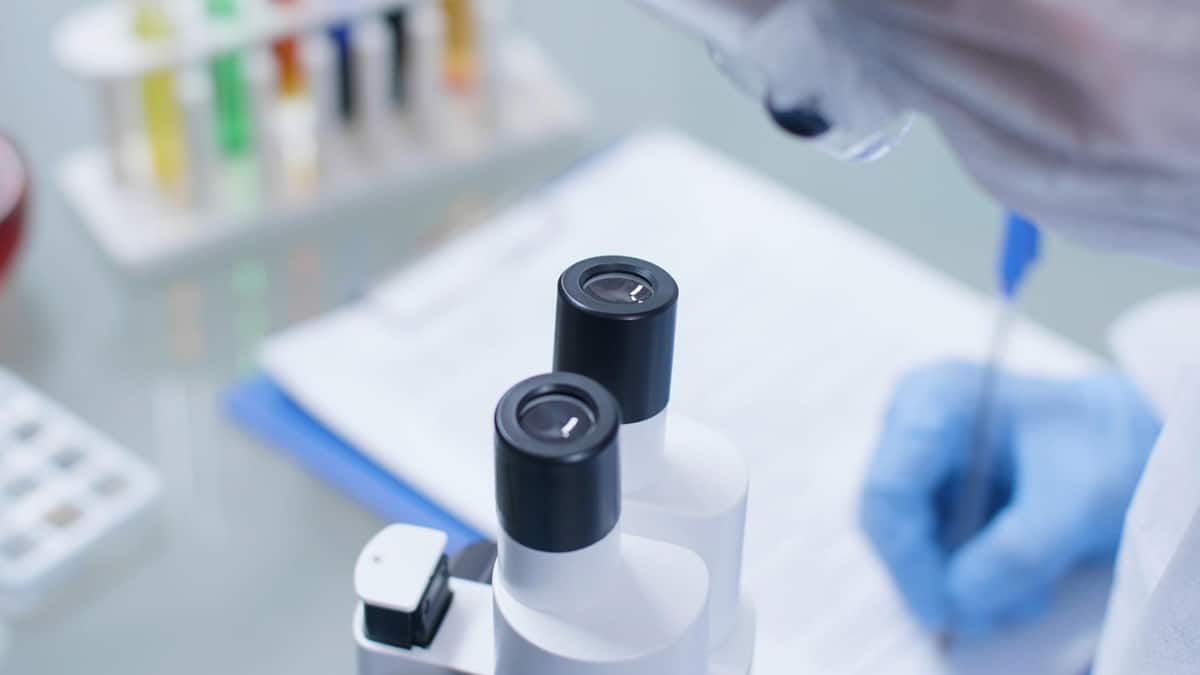Rapamycin for Anti-Aging: The Pros and Cons
Physical Health

Rapamycin, also known as sirolimus, is a drug with immunosuppressive and antiproliferative properties. In addition to its roles in preventing organ transplant rejection and treating some types of cancer, it has also shown promise as an anti-aging drug. However, the use of rapamycin to slow aging is controversial. Some proponents claim that it can prevent or reverse age-related changes in the human body, but many researchers warn that the long-term risks of this off-label use of rapamycin are unknown.
What is Aging?
Aging has many effects on the body: bones get brittle, hair turns gray, and the heart, brain, and other organs stop functioning as well as they once did. Aging causes changes in the body on a cellular level that lead to the noticeable effects that people experience as they get older. There are many underlying causes of aging, but they can be summarized as the accumulation of cellular damage over an individual’s lifetime. Preventing or reversing some of this cellular damage has been proven to reduce the effects of aging in various organisms and may have the same benefit in humans.
It is said that time heals all wounds and wounds all heels. No one is immune to the effects of aging, but many people are seeking to change that. Just as people once searched for the mythical fountain of youth, people nowadays look for ways to prevent or reverse aging through the use of medications and supplements. Rapamycin is one drug that shows great promise as an effective anti-aging treatment.
The History of Rapamycin
Rapamycin was discovered in soil samples taken from the island of Rapa Nui, more commonly known as Easter Island. It was found to be an antifungal chemical produced by bacteria in the soil. Rapamycin falls into a class of drugs called macrolides, a class which includes antibiotics such as azithromycin, clarithromycin, and erythromycin. Unlike other macrolides, however, rapamycin was found to be a potent immunosuppressive and antiproliferative agent. Immunosuppressant drugs suppress the immune system and are important for preventing transplant rejection and treating diseases caused by an overactive immune system. Antiproliferative drugs can help prevent tumor growth and angiogenesis—the growth of new blood vessels within tumors. Rapamycin is currently approved by the FDA to prevent kidney transplant rejection and to treat a rare disease called lymphangioleiomyomatosis (LAM). However, research has shown that rapamycin has several other uses, including as a treatment for several types of cancer as well as vascular tumors.
Science of Rapamycin
Rapamycin inhibits the function of a protein called mTOR (mammalian target of rapamycin or mechanistic target of rapamycin), which is involved in cell signaling pathways that control the translation of RNA to protein. Rapamycin primarily interacts with mTOR complex 1 (mTORC1), but can also interact with another complex, mTORC2, which may cause some of its unwanted side effects.
Research has found that mTOR is involved in cellular metabolism and plays a significant role in aging and longevity. mTOR drives aging-related changes that lead to:
- Cognitive dysfunction and cerebrovascular disease
- Atherosclerosis and heart disease
- Diabetes
- Cancer
- Inflammation
While mTOR is essential for cells to function normally, mTORC1 activity increases as the body ages, contributing to many of the negative effects associated with aging.
Rapamycin and Aging

The anti-aging effects of rapamycin were first discovered over 20 years ago by researchers studying yeast. Further research found similar effects in roundworms, fruit flies, and mice. Much of the research into the effects of rapamycin on aging has been performed in mice. While this might not seem relevant to human health, mice have much of the same physiology as other mammals, including humans. Mice are regularly used to test the effects of drugs on mammals. This not only helps elucidate the way that drugs work but also helps predict how these drugs will affect humans. Mouse studies of rapamycin have revealed that it can:
- Increase lifespan and improve cognition
- Prevent or reverse age-related cognitive decline, muscle loss, and heart dysfunction
- Inhibit spontaneous tumors.
Benefits of Rapamycin
Rapamycin has proven to have many beneficial effects on aging in mice; ongoing research is finding that rapamycin may have these positive effects in humans as well. Studies have shown that, in humans, rapamycin can:
- Improve age-related changes such as cognitive decline, physical performance, and atherosclerosis
- Suppress tumor growth of certain types of cancer
- Reduce the risk of skin cancer and other cancers in transplant patients who require immunosuppressive therapy
- Rapamycin may also have benefits in the treatment of systemic lupus erythematosus, graft-versus-host disease, and, possibly, COVID-19
Rapamycin appears to be capable of maintaining brain function, heart health, and physical strength and endurance in younger people while also improving these in older adults, essentially reversing some of the negative effects of aging. Rapamycin may also increase longevity, increasing an individual's lifespan. Not only that, it may increase lifespan without a decline in health or with an improvement in health compared to normal aging. A drug that can offer a longer life with better health and a better quality of life is an enticing proposition, but it may be too good to be true.
Risks of Rapamycin
Rapamycin can have many severe side effects; most notably, it can suppress the immune system. While this is useful in transplant patients, this can increase the risk of infection and serious illness from infection—including sepsis—in otherwise healthy individuals. Immune suppression due to rapamycin can also cause impaired wound healing. Other side effects of rapamycin include insulin resistance, high cholesterol, and interstitial lung disease.
Rapamycin can have negative effects on glucose metabolism. Results vary across different studies, but there is evidence that rapamycin can cause diabetes-like effects, including high blood sugar and insulin resistance, as well as high cholesterol. While rapamycin is approved for use in preventing kidney transplant rejection, it is not recommended for some other types of transplants. Rapamycin can cause serious lung damage after organ transplant and is contraindicated for lung transplant.
Some of these side effects may be dose-dependent. This means that using low-dose rapamycin may decrease side effects. Even at higher doses, intermittent dosing (weekly versus daily) may reduce side effects while maintaining the positive effects.
Perhaps the most significant risk of taking rapamycin as an anti-aging drug is that there is insufficient human research into its risks and benefits, especially the long-term effects of its use. While there is a great deal of research into the anti-aging effects of rapamycin in animal models, there are few human studies. To make matters worse, these studies have mostly been very small groups of patients, and treatment regimens vary significantly between studies. There may be little to no risk of adverse effects from using rapamycin to fight aging, but we do not know how dosage or scheduling affects that risk. We do not know if rapamycin increases life expectancy in humans. We do not know if it causes harm with long-term use in otherwise healthy patients. We do not know how a person’s age affects adverse outcomes. Simply put, there may be risks that we do not know about.
What Does the Evidence Say?
Research clearly shows that rapamycin has potent anti-aging properties in several organisms, including mice. However, research into the anti-aging effects of rapamycin in humans is still lacking. Limited studies in small samples of the elderly population have found that low-dose rapamycin can improve measures of cognitive function and physical performance. Ongoing clinical studies, such as the PEARL study (Participatory Evaluation of Aging with Rapamycin for Longevity), are striving to uncover how useful higher doses of rapamycin are as an anti-aging treatment in humans. Until more results of these types of studies are published, the effectiveness of rapamycin to fight aging in humans is still in question.
There are still many unanswered questions about rapamycin as it pertains to aging:
- What is the proper dosage of rapamycin to treat aging?
- Should it be taken daily or once weekly?
- Is short-term or long-term therapy more effective?
- How do dosage and treatment schedules affect the prevalence of side effects?
These are important questions that must be answered before rapamycin can be widely recommended by the medical community as a safe and effective treatment for aging.
The Final Analysis

Based on the available research, rapamycin and related mTOR inhibitors appear to be useful anti-aging drugs. However, there is not currently enough research on the long-term effects of rapamycin to fully assess the risks and benefits. More clinical trials are needed to paint a more complete picture of the risks and benefits of rapamycin when used to fight aging and the best way to use it.
Since rapamycin is a prescription drug, access to it as an anti-aging treatment is limited. For those who wish to give it a try, there are a handful of doctors across the US who will prescribe rapamycin for its age-defying effects. It should be noted that even among rapamycin researchers, opinion is divided as to whether it is suitable for most patients. Even some doctors who take rapamycin themselves do not prescribe it to their patients due to concerns about its safety and efficacy for treating aging.
Rapamycin is not the only mTOR inhibitor. Other drugs that are analogs of rapamycin (called rapalogs) include deforolimus, everolimus, and temsirolimus. At least one study so far has shown that everolimus can enhance immune function and reduce infections in elderly patients. While rapamycin may appear to be the cutting-edge anti-aging drug, it may turn out that other mTOR inhibitors are more effective and/or safer to use. Again, more research is needed
Do the benefits of rapamycin to treat aging outweigh these risks? Some say yes, and argue that, given the current level of evidence, it is riskier to not take rapamycin as an anti-aging drug. It is impossible to know what the future holds in terms of rapamycin research, but the normal effects of aging paint a clear picture of what most people can expect to experience as they grow older. Every individual considering using rapamycin to fight aging must decide for themselves in conjunction with advice from their physician what level of risk they are comfortable with.